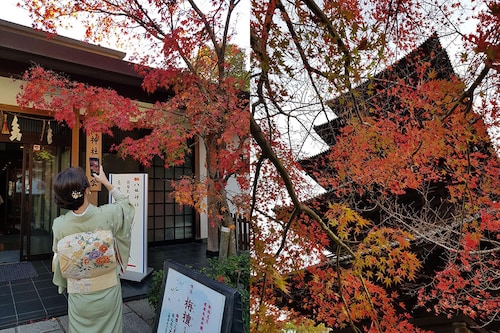Momijigari: Japanese tradition of leaf hunting
Momijigari means 'red leaves hunting,' from the word momiji for the famous red tone of the maple leaves. It is as important as the contemplation of cherry blossoms (a tradition known as hanami) in spr


As Japan fully reopens its borders to tourists this October 11, many travelers will be back in the land of the rising sun in time to witness a tradition that has been rooted in Japanese life for centuries: observing the autumn colors that trees display in this season. It is nearly as important as the contemplation of cherry blossoms (a tradition known as hanami) in springtime, and it also has a name: momijigari meaning "red leaves hunting," from the word momiji for the famous red tone of the maple leaves.
From artists like Giuseppe Arcimboldo to Claude Monet and of course Vincent van Gogh, autumn has long been a source of inspiration. Vines, chestnut trees and oak trees all have their own rhythm for turning various shades of yellow, orange, burgundy and ochre, with parks and forests becoming veritable masterpieces of colors to contemplate. Autumn landscapes often invite introspection and meditation as well as walks through nature specifically taken to enjoy the changing colors of the foliage. While the Japanese term for this is momijigari, in North America it"s known as leaf peeping.
In order not to miss out on this spectacle of nature, a map and fall foliage forecast 2022 has been created by jrailpass.com to outline the best places and periods to appreciate the autumnal foliage patchwork, also referred to as koyo.. The map indicates the best viewing periods by time period and by region., as well as listing the best spots in Tokyo and Kyoto. The fall foliage spotting goes from mid-September to mid-December, though in general the mainland highlights are from mid-October to mid-November.
This event, which encourages friends and families to meet at the foot of the trees (at the risk of having sometimes a little difficulty to take the time to photograph the leaves correctly), is an ancestral tradition which goes back to the Heian period, between 794 and 1185, when the Kyoto was about to become the new imperial capital today of courseTokyo is the capital). Kyoto is indeed one of the top destinations for "momijigari", where the Kiyomizu-dera temple offers a magical and meditative spectacle.
First Published: Oct 12, 2022, 15:46
Subscribe Now